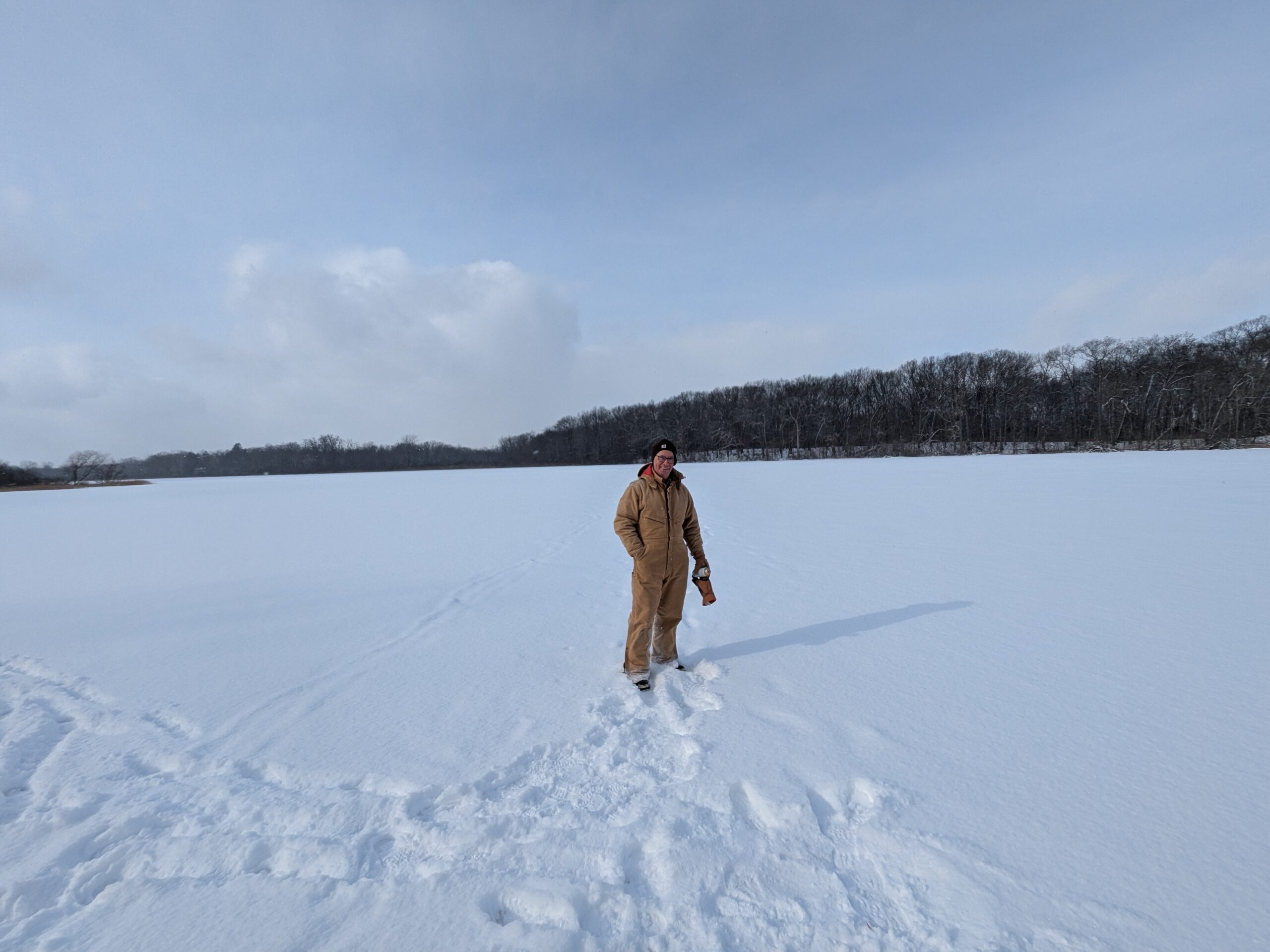Conservation Manager Chad Machinski, M.S., manages the stewardship of MA’s sanctuaries and engaging with our dedicated volunteers ever since. To help you stay connected with the work being done, he will be presenting regular online updates about activities going on at them: birds seen or heard, conservation work, improvements, interesting plants, and more.
A cold and snowy start to 2025 has limited the number of days on the sanctuaries; however, at the sanctuaries we’ve visited, great things have been accomplished.
PHYLLIS HAEHNLE MEMORIAL SANCTUARY
The Phyllis Haehnle Memorial Sanctuary has seen two workdays since the calendar flipped that have been much needed. Focusing on areas that are under the Wildlife Habitat Grant Program, myself and volunteers have focused on treating invasive species such as Asian bittersweet while also doing some canopy thinning. Although the removal of native trees can feel sacrilege at times, in order to achieve the open canopy of an oak savanna, it is a must. Both the canopy thinning and the bittersweet treatments were necessary before a forestry mower came through to mow down larger invasive shrubs such as honeysuckle, autumn olive, and buckthorn. Although the mowing does not completely eliminate these shrubs, it can make the site much more manageable come spring. If you head out to Haehnle, you’re sure to notice some of the work on the western portion of the sanctuary near Eagle Lake. While you’re out there, be sure to scan the marsh for the Rough-legged Hawk that’s been hanging around.
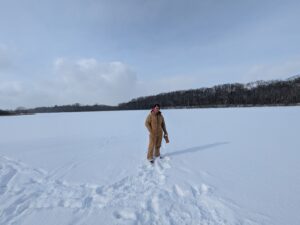
Steve Jerant, Haehnle Committee Chair, standing on a frozen Eagle Lake. Photo by Chad Machinski
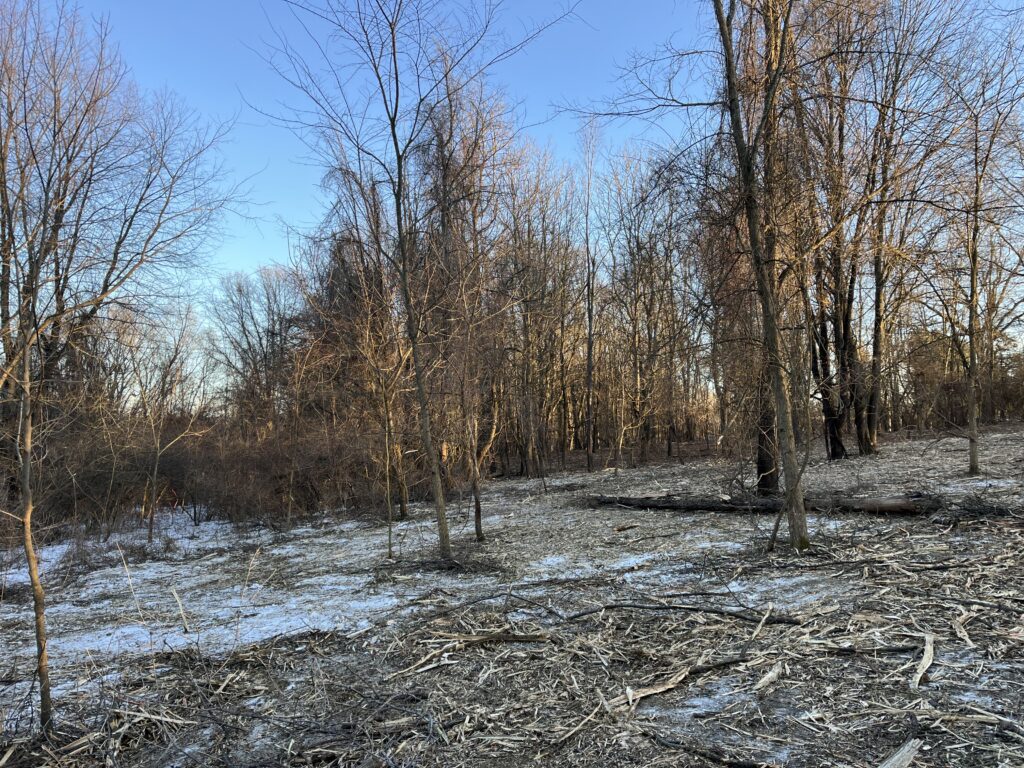
Unit 1.04 at Haehnle post mowing. View from north corner looking southeast.
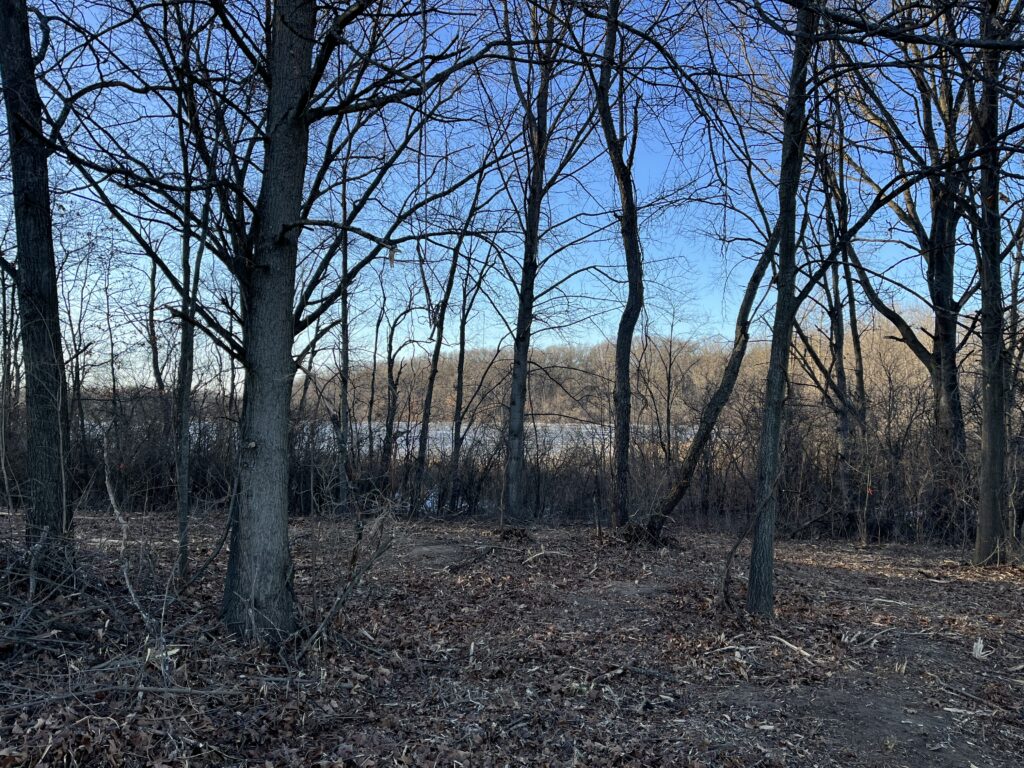
Unit 1.02 at Haehnle post mowing. View from trail toward tulip tree looking northwest.
MARTHA MOTT SANCTUARY
After two months of no workdays at Martha Mott Sanctuary, the autumn olive is back to shaking in its boots. Our dedicated work crew was out on one of the warmest days of January to do some more clearing. After having a forestry mower out there at the end of 2024, we have pushed on to some of the more forested areas of the sanctuary to beat back the invasives there. Even with some time off, I’m legitimately concerned that the volunteers here are going to work themselves out of a job!
CHIMNEY SWIFTS
Lastly, what would a blog post be without a mention of Chimney Swifts? In early February, I traveled up to Big Rapids, Michigan, to present on Chimney Swifts to a group of about 30 folks. Big Rapids City Manager Mark Gifford invited me to do this talk during their Festival of the Arts month due to his great interest in the Chimney Swifts that use the City Hall chimney as a roosting site during migration. In addition, Mark has found several sites that are being used for nesting. Due to Mark’s enthusiasm, many folks in the audience had already been to see swifts coming in to roost during migration. Mark’s efforts are much appreciated as he helps to fill in the gaps on Chimney Swifts in Michigan.
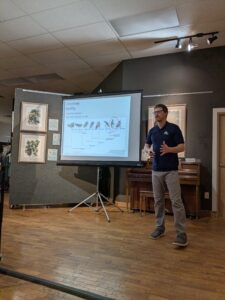
Conservation Manager Chad Machinski presents on Chimney Swifts in Big Rapids.
To learn more about Michigan Audubon sanctuaries, visit michiganaudubon.org/conservation/bird-sanctuaries. If you want to volunteer at a Michigan Audubon sanctuary, please complete the Sanctuary Volunteer Interest Form.

Chad Machinski, MS
Conservation Manager
While Chad’s first love is botany, he doesn’t deny the intertwining nature of birds, plants, insects, and all other organisms we share the world with. His passion for the natural world began in his undergraduate time at the University of Michigan, taking several different forms along the way. His graduate studies at the University of Michigan allowed him to more closely examine the natural communities of Michigan and further understand the complex nature of ecosystems. His work as a Nichols Arboretum Caretaker while in school further enabled him to be directly involved in conservation work as he led workdays removing invasive plant species, performed trail maintenance, and guided tours. Chad can usually be found out in a park in a few ways: binoculars glued to his face, hunched over looking at plants, or flipping logs looking for snakes and salamanders.

